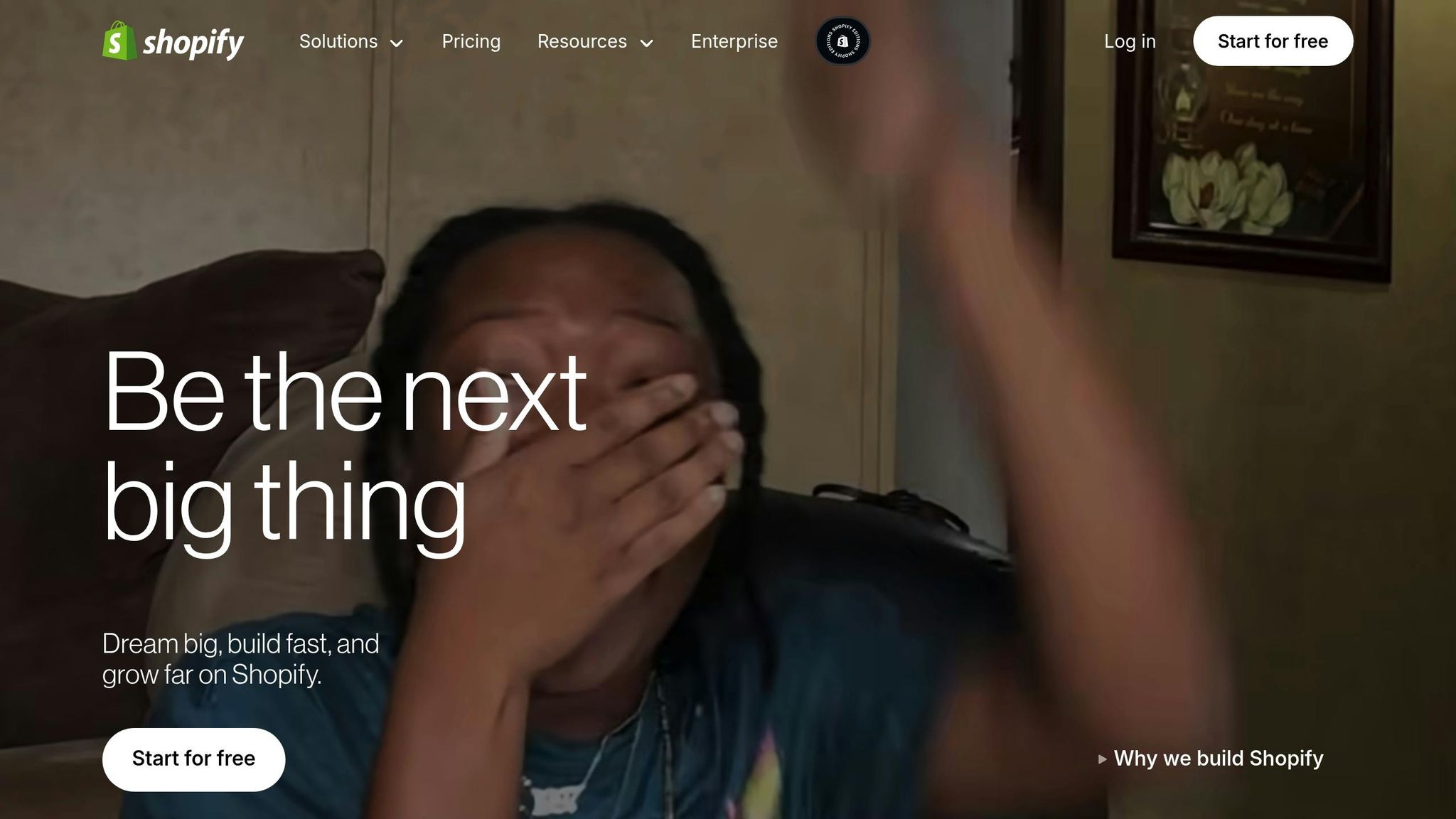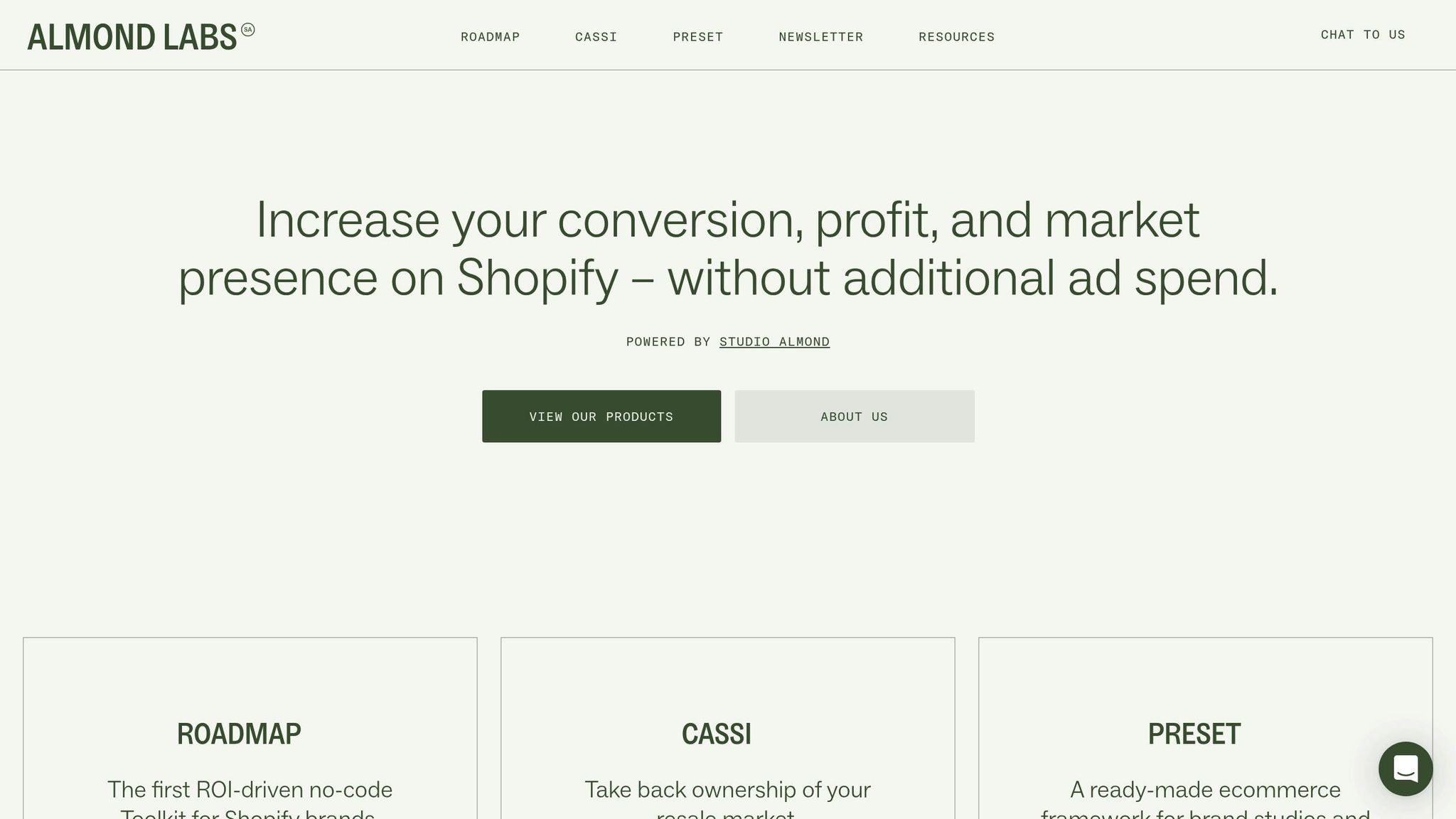
Want to increase customer spending on Shopify? Loyalty programmes can do just that. Here's how they help boost upselling:
- Loyal Customers Spend More: Repeat customers spend 67% more than new ones. A loyalty programme encourages them to return and buy more.
- Personalised Offers Work: Use loyalty data to create tailored recommendations and upsell opportunities that feel relevant.
- Tiered Rewards Motivate: Programmes with levels (e.g., NZ$200, NZ$500, NZ$1,000) encourage customers to spend more to unlock better perks.
- Exclusive Perks Drive FOMO: Special rewards like early access to products or limited-edition items appeal to customers' desire for exclusivity.
- Cost-Effective Growth: Retaining customers through loyalty programmes is cheaper than acquiring new ones, with just a 5% retention increase boosting profits by up to 95%.
For New Zealand Shopify stores, make sure your loyalty programme complies with local privacy laws, GST rules, and reflects Kiwi values like sustainability and community focus. Tools like Almond Labs' Roadmap can simplify setup, helping you launch a programme that drives revenue and builds lasting customer relationships.
How to Create a Loyalty Program on Shopify | Full Tutorial 2025

Benefits of Loyalty Programmes for Upselling
Loyalty programmes are a smart way to boost revenue by increasing both the average order value (AOV) and customer lifetime value (CLV). Research shows that existing customers spend 67% more than new ones [1]. Even more striking, a 5% bump in customer retention can lead to profit increases ranging from 25% to 95% [1]. For New Zealand businesses, especially those operating on tight margins, this means a chance to grow profits without the hefty costs associated with acquiring new customers.
These programmes also strengthen emotional connections with customers. Studies reveal that 70% of emotionally engaged consumers spend twice as much on brands they’re loyal to, compared to just 49% of low-engagement customers [1]. Add personalisation into the mix - where 78% of shoppers are more likely to return to brands that tailor their experiences [1] - and loyalty programmes become a gateway to creating upselling opportunities that feel natural and relevant. These financial and emotional benefits set the stage for advanced strategies like tiered rewards and exclusive perks.
How Tiered Rewards Drive Higher Spending
Tiered loyalty programmes tap into human psychology, encouraging customers to spend more to unlock better rewards. By introducing progressively enticing benefits at different spending thresholds, these programmes turn shopping into a game.
Here’s what the data says:
- 37% of customers increase their spending to achieve higher tier status [3].
- 74% of customers feel more engaged with a brand when offered elevated status levels [3].
Take Flipkart Plus, for example. Members of this programme spend five times more than non-members and show seven times higher spending overall [2]. A tiered system with three to four levels, each offering distinct perks, strikes the right balance between being achievable and aspirational. REN Clean Skincare does this well, offering escalating benefits that motivate customers to shop more frequently [4].
"The most effective tier structures typically feature 3-4 levels, balancing accessibility with aspiration while maintaining clear value differentiation between tiers." [3]
For New Zealand retailers, this could mean setting tier levels at annual spending thresholds like NZ$200, NZ$500, and NZ$1,000, with rewards such as free shipping, exclusive products, or early access to sales. These perks not only encourage higher spending but also make customers feel valued at every stage.
Using Exclusive Perks to Create Upsell Opportunities
Exclusive perks can make loyalty programme members feel like they’re part of an elite community, which naturally opens the door for upselling through a sense of scarcity and exclusivity. In fact, 60% of purchase decisions are influenced by the fear of missing out (FOMO) [3].
Brands like Nike and Nordstrom have mastered this approach. Nike Membership offers exclusive early access to select products [4], while Nordstrom’s The Nordy Club provides bonus points during special events to drive higher spending [4]. Beyond standard perks like free shipping, exclusive collaborations, limited-edition releases, and member-only events add significant appeal - especially at higher tiers [3].
"Rewards from Strategic brand partners at higher tiers create compelling value propositions that drive upward mobility." [3]
For Shopify stores in New Zealand, exclusive perks could include special product bundles, premium discounts, or first access to limited-edition items. These benefits ensure that loyalty memberships deliver real value, transforming them from just another discount scheme into a meaningful connection with the brand.
Building Long-Term Customer Relationships
The true strength of loyalty programmes lies in their ability to turn one-off transactions into lasting relationships, creating multiple chances to upsell. Retaining customers is far more cost-effective than acquiring new ones [7], especially when the average cost of acquiring a new customer is $29 [6].
By focusing on trust and consistent value, brands can build deeper connections. Repeat customers are 3.3 times more likely to prioritise quality and affordability over discounts when making purchases [6]. Personalisation plays a huge role here. Overstock.com, for instance, customised its web pages and emails based on user behaviour, leading to double-digit increases in engagement, even among previously inactive customers [6].
For New Zealand Shopify stores, loyalty programmes can go beyond simple discounts. Thrive Market, for example, offers recipes and tips tailored to customers’ orders [5], while Wendy’s uses AI to create personalised offers through gamification [5]. Loyal customers often become enthusiastic advocates for the brand - a valuable advantage in New Zealand’s close-knit communities, where word-of-mouth can drive significant growth [7].
"Loyalty is the result of the sum of all interactions a customer has with a brand, and when done right, it builds an emotional connection that establishes trust between both parties." [8]
How to Set Up a Loyalty Programme on Shopify
Launching a loyalty programme on Shopify can be a game-changer for boosting upselling in New Zealand. By focusing on the right structure, tools, and rewards, Kiwi retailers can create programmes that inspire customers to spend more and stay loyal.
Choosing the Right Loyalty Programme Structure
The backbone of any loyalty programme lies in its structure. It needs to align with your brand's goals and resonate with how your customers shop. Research highlights that 79% of consumers shop more often with brands that offer loyalty programmes [10]. This makes selecting the right structure a critical step for driving repeat purchases.
Here are three popular structures to consider:
-
Points-based programmes: These are perfect for encouraging frequent purchases. For example, Evermore Toys implemented a system where customers earn 1 point for every NZ$1 spent, and 100 points translate to NZ$10 off their next purchase. This simple setup led to a 95% increase in loyalty points earned monthly over a year [12].
-
Tiered programmes: Designed to encourage higher spending, these programmes reward customers as they progress through tiers. Merrell NZ's system, for instance, offers increasing discounts and perks as customers accumulate more points [12].
-
Subscription-based programmes: These charge a recurring fee in exchange for premium benefits like free shipping or exclusive discounts. They’re especially effective for businesses with regular, repeat customers.
To make your programme stand out in New Zealand, consider rewards that matter locally, such as free nationwide shipping, early access to seasonal collections, or collaborations with beloved local brands. Once you’ve chosen your structure, a no-code solution can get you up and running quickly.
Using Almond Labs' Roadmap Toolkit for No-Code Setup

Almond Labs’ Roadmap toolkit takes the hassle out of building a loyalty programme. With seamless Shopify integration - including POS support for both in-store and online shopping - it simplifies what used to be a complex process.
What makes Roadmap special? It combines loyalty rewards with other promotional tools like the Roadmap tag library, Gift With Purchase (GWP), and discounts, all without needing custom development. This lets you create dynamic campaigns that integrate multiple strategies in one place.
"It wasn't enough to simply offer a solution that mirrored our competitors - instead, we've created a programme that fully integrates with the Roadmap tag library, GWP and discounts." - Alex Murton, Managing Director & Co-Founder, Studio Almond [11]
The toolkit offers features like varied ways to earn points, tiered rewards, referral systems, and checkout point redemption without discount codes. Plus, its customisable design ensures your loyalty programme looks and feels like a natural extension of your brand.
The results speak for themselves. Brands using Roadmap have seen 50% of their online sales attributed to its features, along with an 8.4% increase in customer lifetime value and 14.6% more account sign-ups. Many businesses recover their annual membership costs within just 30 days of launching their programme.
Roadmap also provides ongoing support with quarterly strategy sessions. These 2-hour workshops help you refine and expand your loyalty programme, ensuring it evolves alongside your business.
Once your system is in place, the next step is setting clear reward thresholds that encourage spending.
Setting NZD-Based Reward Thresholds and Metrics
Reward thresholds are the cornerstone of a successful loyalty programme, especially in the New Zealand market. A good rule of thumb is to allocate 3–10% of each NZ$1 spent as loyalty points [9], but it’s essential to tailor this to local spending habits.
Here’s how to structure your rewards effectively:
-
Set the first reward just beyond the points customers can earn without buying anything. For example, if you offer 50 points for signing up, make the first reward achievable at 100–120 points. This encourages customers to make that all-important second purchase [9].
-
Be generous with introductory points, offering about half the points needed for the first reward. This ensures customers are motivated to make 1–3 purchases before redeeming their reward [9].
-
Use seasonal promotions to drive engagement. For instance, bCODE ran a double-points campaign during a key shopping period, leading to a 94% increase in loyalty points spent [12].
Take inspiration from brands like Take Our Bralette Club, which offers diverse ways to earn points - purchases, referrals, social media activity, and even birthdays [12]. This approach taps into the fact that referred customers spend twice as much as others and have a 16% higher lifetime value [10].
Finally, track key metrics like customer retention, purchase frequency, and average order value. Data shows that active loyalty programme members spend 10% more, while members who redeem rewards spend 25% more than inactive members [10]. These insights can help you fine-tune your programme for maximum impact.
sbb-itb-f46a14b
Optimising Your Loyalty Programme for Upselling Success
Once your loyalty programme is up and running, the real value lies in leveraging the data it generates to create smarter upselling strategies. This data gives you the ability to craft upsell offers that feel natural and aligned with your customers' preferences, encouraging them to spend more without feeling pressured.
Using Data Insights for Personalised Recommendations
Your loyalty programme is more than just a rewards system - it’s a treasure trove of customer insights. Every interaction provides valuable information about preferences, habits, and timing, which can be used to refine your upselling efforts.
Start by digging into purchase patterns among your members. Identify trends - customers who frequently buy specific categories, seasonal shoppers, or those who lean towards premium products. With this information, you can design campaigns that feel relevant and personal.
Here’s an example: if a segment of customers consistently buys skincare samples, you could offer them exclusive deals on full-sized products. This subtle nudge encourages them to explore higher-value options while still catering to their interests.
Loyalty data also allows you to send restock reminders, tailored promotions, and timely offers based on purchase history. For instance, a customer who purchased running shoes three months ago might appreciate a reminder to replace them, especially if it comes with an incentive like bonus loyalty points.
Timing is everything. Loyalty data doesn’t just tell you what customers buy - it also reveals when they’re likely to buy. Use this information to automate personalised recommendations that land at just the right moment. With the right timing, these insights can seamlessly transition into automated upsell triggers.
Automating Upsell Triggers After Purchase
Actionable loyalty data becomes even more powerful when paired with automation. Automated triggers ensure your upsell offers reach customers when they’re most engaged.
Top-performing loyalty programmes can increase revenue from customers redeeming points by 15% to 25% annually [14]. Use automation to capitalise on key moments like reaching a new loyalty tier, earning a milestone number of points, or completing a redemption. These are times when customers are already engaged with your brand, making them more receptive to upsell opportunities.
You can also set up visit-based triggers. Visit-based rewards programmes often generate more engagement than those tied solely to spending levels [13]. If a customer visits your store or website multiple times in a short period, it’s a clear sign of interest - making it the perfect time to suggest complementary products or upgrades.
A tool like Almond Labs' Roadmap toolkit simplifies this process by integrating loyalty triggers with promotional strategies. For example, you can combine point-earning opportunities with offers like "Gift With Purchase" or exclusive discounts, giving customers even more reasons to increase their order value.
If you’re looking to move slow-selling inventory, automated triggers can offer bonus points for these items. Similarly, if you want to encourage higher average order values, create triggers that activate when customers are close to reaching free shipping thresholds. Once these triggers are in place, refine them through testing to maximise their effectiveness.
A/B Testing Loyalty-Based Upsell Campaigns
Not every upselling approach will work for every audience. That’s where A/B testing comes in - it takes the guesswork out of the equation, helping you determine what resonates best with your customers.
A/B testing can improve online store conversion rates by 12% to 15% [15]. The key is to test one variable at a time, such as whether double points or a percentage discount is more effective at driving upsells. Personalisation plays a big role here, too - customised experiences have 41% more impact than generic ones [16]. Experimenting with different levels of personalisation can help you find the right balance.
Take Alaska Airlines as an example. Through strategic A/B testing, they boosted sign-ups for their mileage plan by 18% and cut implementation time from three months to just four weeks [16].
When setting up your tests, focus on one variable at a time. For instance, compare the effectiveness of milestone-based rewards versus surprise bonuses. Be sure to run tests long enough to gather meaningful data and ensure the results are statistically significant.
Segment your customers into manageable groups and customise test campaigns for each segment. This approach not only increases immediate sales but also strengthens long-term relationships. Success shouldn’t just be measured in sales numbers - look at engagement levels to ensure your upselling strategies enhance the overall customer experience, rather than detracting from it.
Compliance and Localisation for New Zealand
For Kiwi Shopify stores, ensuring legal compliance and aligning with local culture are key to making loyalty programmes effective. By meeting New Zealand’s legal standards and embracing cultural values, you can build trust, protect your business, and connect more meaningfully with your customers.
Following NZ Privacy Laws and Data Protection
New Zealand’s Privacy Act 2020 sets out how businesses must handle customer data. For loyalty programmes, complying with this law isn’t just about avoiding penalties - it’s about building trust with your audience.
Under the Act, your programme must adhere to the 13 Information Privacy Principles, which outline how to collect, store, and use data responsibly. The core ideas? Only gather the information you need, tell customers why you’re collecting it, and protect it from breaches.
| Key Privacy Principles | Relevance to Loyalty Programmes |
|---|---|
| Collection of personal information | Only gather data essential for the programme [17] |
| Awareness of Collection | Be transparent about why and how customer data is used [17] |
| Storage and Security | Use strong security measures to protect data from breaches [17] |
Data breaches are costly for New Zealand’s SMEs, with an average incident costing around NZ$173,000 [17]. Failing to report a serious breach can lead to fines of up to NZ$10,000 [17]. Alarmingly, nearly half of all cyber incidents in the country target SMEs [17], making data security a top priority.
To stay on top of these challenges, appoint a privacy officer to oversee your data practices. Regular audits and clear reporting mechanisms are essential steps to ensure your loyalty programme remains compliant [17].
GST and Reward Valuation
When it comes to taxes, most loyalty rewards in New Zealand are subject to the 15% GST rate [18]. Whether customers redeem points for products or discounts, the GST must be calculated on the actual value provided. For example, a NZ$50 reward requires around NZ$6.52 in GST.
Discount-based rewards add another layer of complexity. Let’s say a customer gets a 20% discount on a NZ$100 purchase (GST inclusive). They’ll pay NZ$80, but GST needs to be accurately calculated for the discounted amount. Some rewards, such as those tied to employee meals or specific fundraising efforts, may qualify for zero-rated GST [18]. However, for most retail loyalty programmes, the standard 15% rate will apply.
Adding Local Elements for Better Engagement
Legal compliance is just one side of the coin. To truly connect with your Kiwi audience, your loyalty programme should reflect the unique aspects of New Zealand’s culture. Incorporating local values and traditions can create a more meaningful experience for your customers.
For instance, Māori make up nearly 15% of the population [19], and integrating values like manaakitanga - hospitality, kindness, and generosity - can enhance your programme. This could mean offering surprise rewards, focusing on exceptional service, or supporting community initiatives that give back locally.
New Zealanders also take pride in their stunning natural environment [19]. Loyalty programmes that prioritise sustainability - like offering carbon-neutral shipping, partnering with conservation groups, or rewarding eco-friendly purchases - can resonate deeply with customers.
Seasonal and cultural themes also offer opportunities to stand out. New Zealand’s summer Christmas and holiday season, which celebrates outdoor activities and family gatherings, is an ideal time for locally inspired campaigns. Rugby, another cornerstone of Kiwi culture, presents opportunities for limited-edition rewards tied to major events, especially those involving the All Blacks [19].
Finally, small but thoughtful touches in your messaging can make a big impact. Using phrases like "Kia ora" or acknowledging cultural milestones helps create inclusive experiences that honour New Zealand’s diverse heritage [19].
Conclusion: Boost Shopify Upselling with Loyalty Programmes
Loyalty programmes are a powerful way to drive upselling on Shopify, with the potential to increase revenue by 10–30% while ensuring that 81% of customers return for repeat purchases [21][22].
These programmes are reshaping how businesses interact with customers. Take Starbucks Rewards, for instance - this initiative accounted for 53% of Starbucks' U.S. revenue in 2022, with app users visiting an impressive 5.6 times daily [20]. Results like these highlight the importance of having the right tools to create and manage effective loyalty programmes.
Almond Labs' Roadmap toolkit makes implementing sophisticated loyalty initiatives more accessible. Their no-code solution eliminates technical hurdles, allowing businesses to integrate loyalty features seamlessly. Starting at NZ$495 per month, Roadmap Core connects with tag libraries, gift-with-purchase engines, and discount systems. This integration ensures your loyalty programme becomes a springboard for personalised upselling campaigns, encouraging customers to spend more.
For businesses in New Zealand, localisation is key. Programmes must comply with the country's unique regulations, such as the Privacy Act 2020 and the 15% GST on rewards. Beyond compliance, weaving in Kiwi values like manaakitanga and sustainability can build deeper emotional connections with customers. By aligning your loyalty programme with these cultural elements, you not only gain trust but also enhance upselling opportunities.
With predictions that 87% of consumers will prefer loyalty programmes by 2025 [23] and upselling already contributing 10–30% of e-commerce sales [21], the potential is too significant to ignore. Almond Labs' Roadmap offers a streamlined way to set up and optimise your loyalty programme, helping you tap into these opportunities and drive upselling success in New Zealand.
FAQs
How can Shopify stores in New Zealand ensure their loyalty programmes meet local privacy and GST requirements?
To align with New Zealand's Privacy Act 2020, Shopify stores need to collect personal information only with the customer’s consent and for clearly defined purposes. Customers must be informed about how their data will be used, stored, and how they can access it upon request. This not only ensures compliance but also helps build trust with your customer base.
When it comes to GST, the Goods and Services Tax Act 1985 includes provisions for loyalty programme operators. GST on points can be deferred until they’re redeemed, as long as specific conditions are met - such as ensuring at least 25% of taxable supplies are zero-rated. Correctly applying GST to rewards is crucial to avoid any compliance issues.
By adhering to these requirements, Shopify stores can confidently run loyalty programmes that are both effective and compliant in New Zealand.
How can loyalty programme data be used to personalise upselling on Shopify?
To make upselling on Shopify more personal using loyalty programme data, start by diving into your customers' purchase history and preferences. By understanding what they love, you can suggest products that genuinely match their interests. For instance, if someone regularly buys skincare products, recommending items like serums or moisturisers that complement their routine can feel thoughtful and relevant.
Another smart move is to introduce tiered rewards. This means offering extra loyalty points or exclusive benefits when customers opt for higher-value items. Not only does this encourage them to spend more, but it also deepens their connection to your brand by rewarding their loyalty in a meaningful way.
Using these strategies, you can create a shopping experience that feels tailored and engaging, while also driving sales and strengthening customer relationships.
How can incorporating Kiwi values into a loyalty program help drive customer engagement and upselling on Shopify?
Incorporating New Zealand values into your loyalty program can deepen customer connections and encourage more frequent purchases. Kiwis tend to appreciate qualities like honesty, environmental care, and giving back to the community. By aligning your rewards with these values, you can make your program more relevant and appealing.
For instance, consider offering rewards that showcase local experiences, promote eco-conscious practices, or celebrate aspects of New Zealand culture. These thoughtful touches not only foster loyalty but also inspire repeat business, creating more chances to upsell. When your program reflects the priorities of your audience, it transforms the shopping experience into something meaningful and memorable.
Heading 1
Heading 2
Heading 3
Heading 4
Heading 5
Heading 6
Lorem ipsum dolor sit amet, consectetur adipiscing elit, sed do eiusmod tempor incididunt ut labore et dolore magna aliqua. Ut enim ad minim veniam, quis nostrud exercitation ullamco laboris nisi ut aliquip ex ea commodo consequat. Duis aute irure dolor in reprehenderit in voluptate velit esse cillum dolore eu fugiat nulla pariatur.
Block quote
Ordered list
- Item 1
- Item 2
- Item 3
Unordered list
- Item A
- Item B
- Item C
Bold text
Emphasis
Superscript
Subscript




